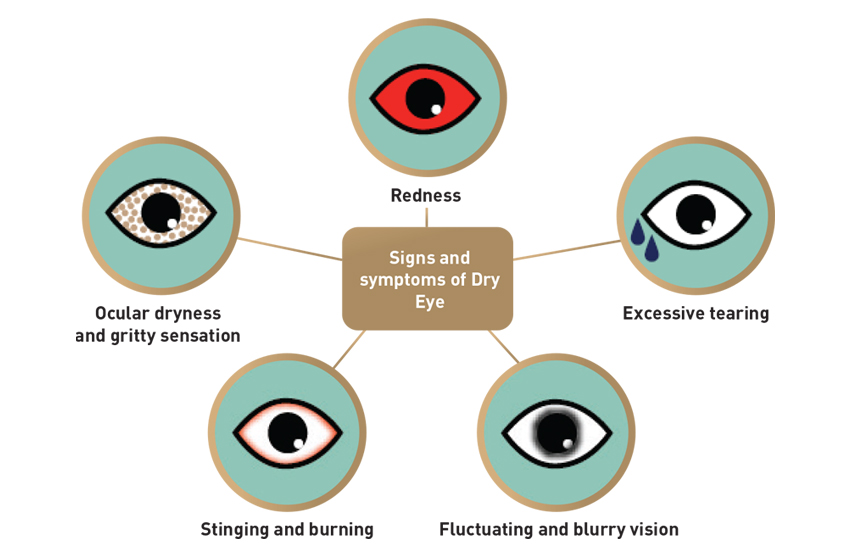What Causes Dry Eye and Discovering Effective Remedies
19 January 2022
Dry eye disease (also known as dry eye syndrome) is a condition where there is a lack of lubrication and moisture on the surface of the eyes, caused by reduced tears production or tear film instability. This condition is often associated with eye discomfort, visual symptoms, as well as inflammatory disease of the ocular surface.
What Causes Dry Eye?
 |
Environmental factorReduced humidity, windy and air-conditioned environment may dry up tears faster. |
 |
Side effects from certain medicationsDry eye can be a side effect of some medicines that treat conditions like colds and allergies, depression and high blood pressure. |
.jpg) |
Medical conditionsDiabetes, thyroid problems, and autoimmune disorders like lupus and Sjögren syndrome can cause dry eye. |
.jpg) |
Aging and hormonal changesBody has to work harder to produce tears as we aged, or experienced hormonal changes during pregnancy or menopause. |
.jpg) |
Exogenous irritants and allergensMay not directly cause dry eye, but could aggravate dry eye symptoms. |
 Environmental factor Reduced humidity, windy and air-conditioned environment may dry up tears faster. |
 Side effects from certain medications Dry eye can be a side effect of some medicines that treat conditions like colds and allergies, depression and high blood pressure. |
.jpg) Medical conditions Diabetes, thyroid problems, and autoimmune disorders like lupus and Sjögren syndrome can cause dry eye. |
.jpg) Aging and hormonal changes Body has to work harder to produce tears as we aged, or experienced hormonal changes during pregnancy or menopause. |
|
|

What can you do to prevent dry eye |
|
Remedies at Home: |
Avoid: |
| Increase the humidity of air at home using a humidifier. | Cigarette smoking or exposure to second-hand smoke, irritants and pollutions. |
| Changing the characteristic of airflow at home or at work | Air conditioning and low humidity environment. |
| Wear sunglasses with wraparound frames to reduce exposure to drying winds and the sun. | Medications that may exacerbate dry eye condition, such as antihistamine and diuretic use. |
| Limit screen time and scheduling regular breaks from screen. | Staring at the computer or phone screen for too long. |
| Drink plenty of water (8 to 10 glasses a day) and getting enough sleep (7 to 8 hours a night). | |
References:
Al-Rajhi A., Ambrus A., Lastra R., Lum FC, Mizuiri D. Dry Eye Syndrome Preferred Practice Pattern. American Academy of Ophthalmology. 2018 Sept.
Dry Eye. [Internet] National Eye Institute. 2020 Dec 23.






